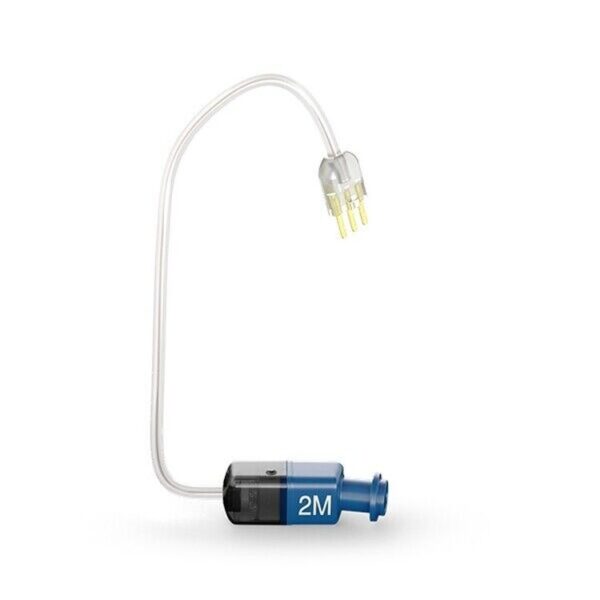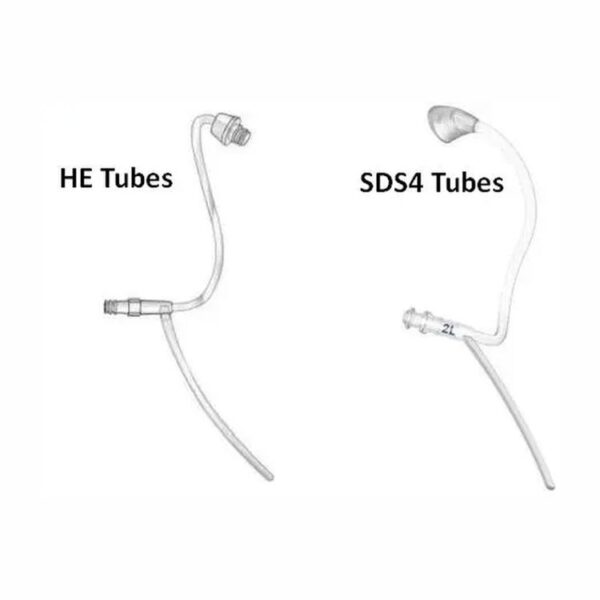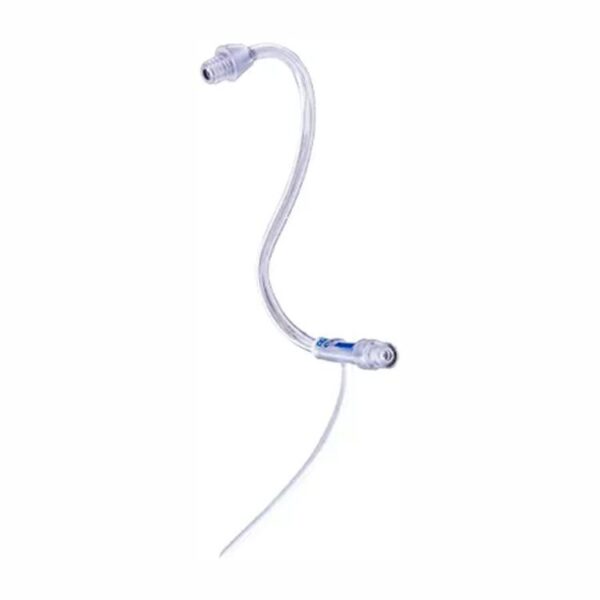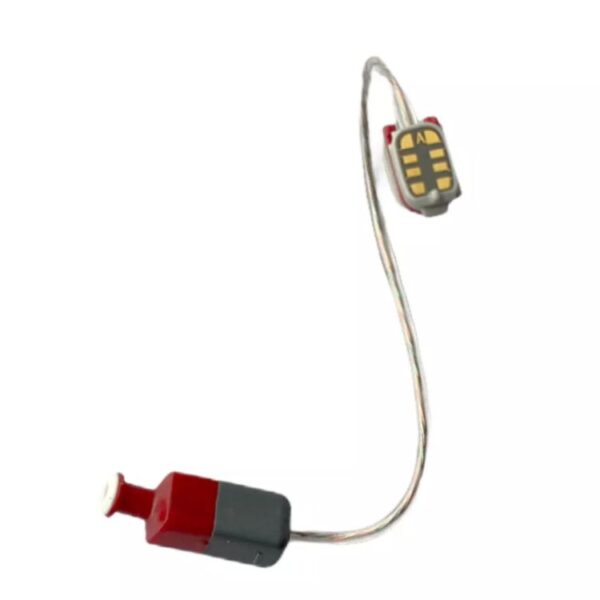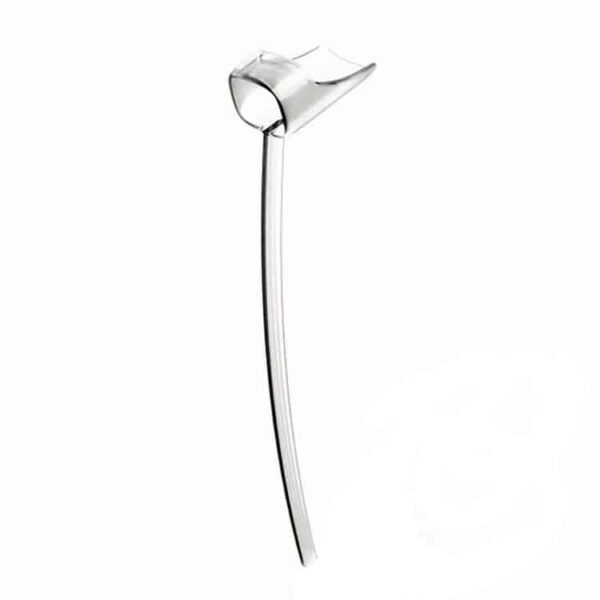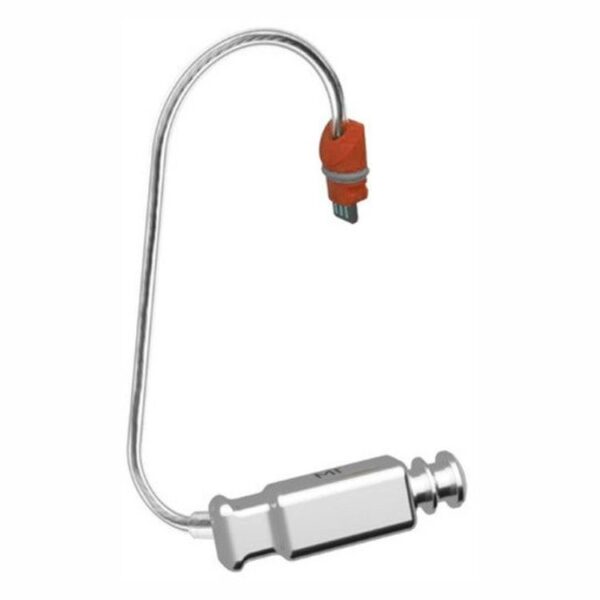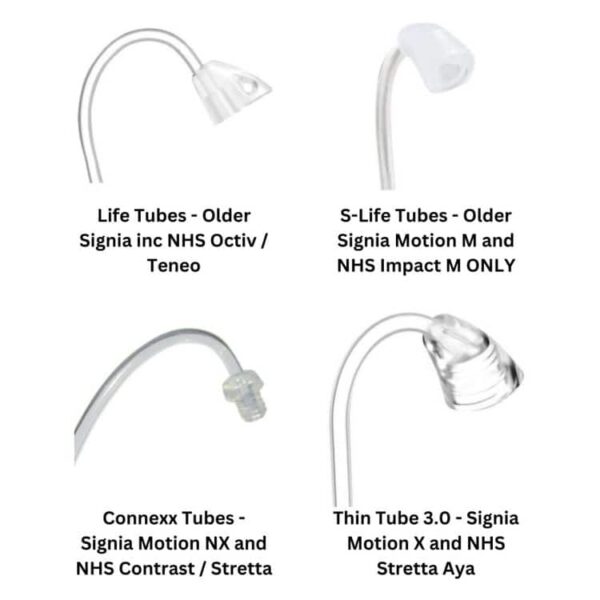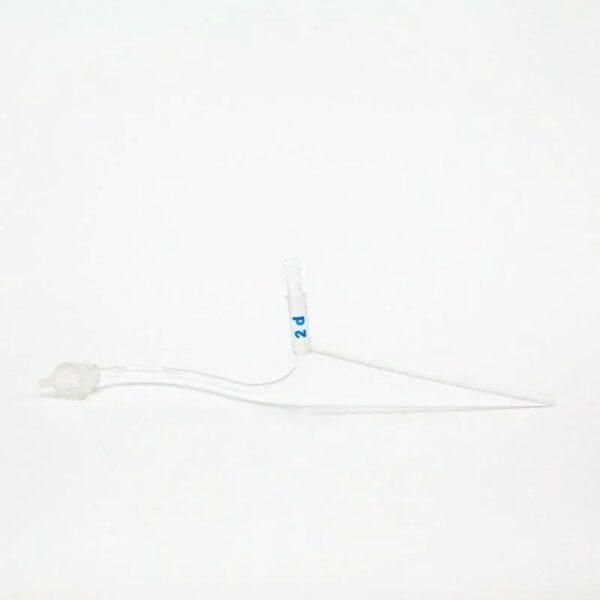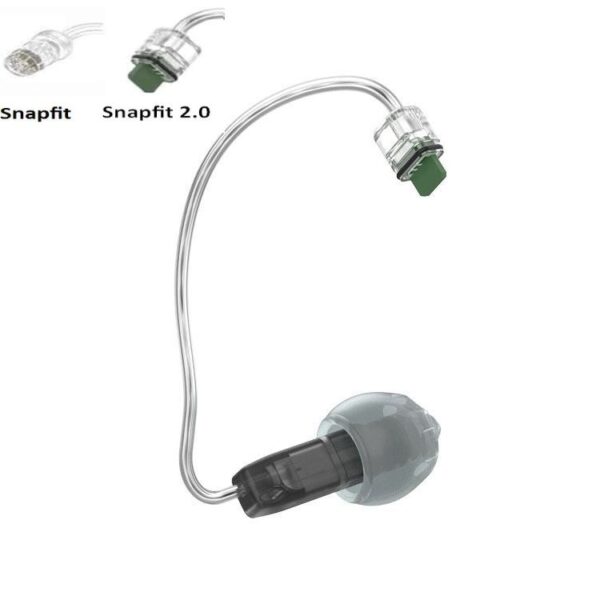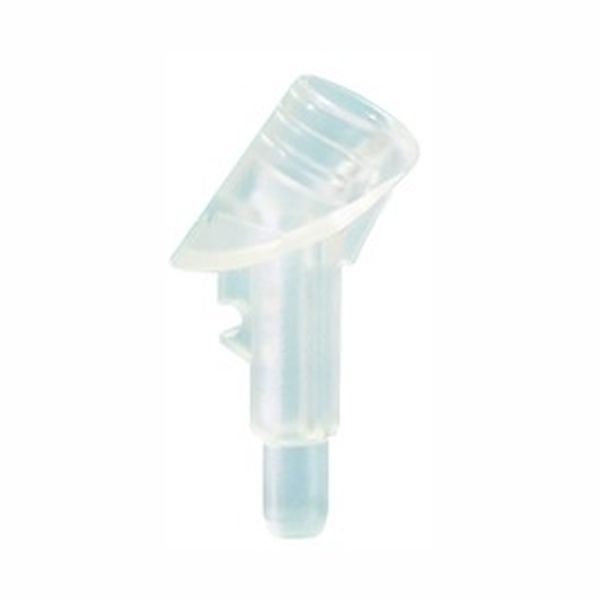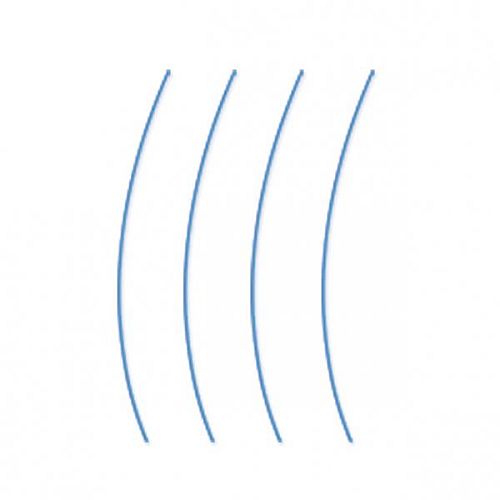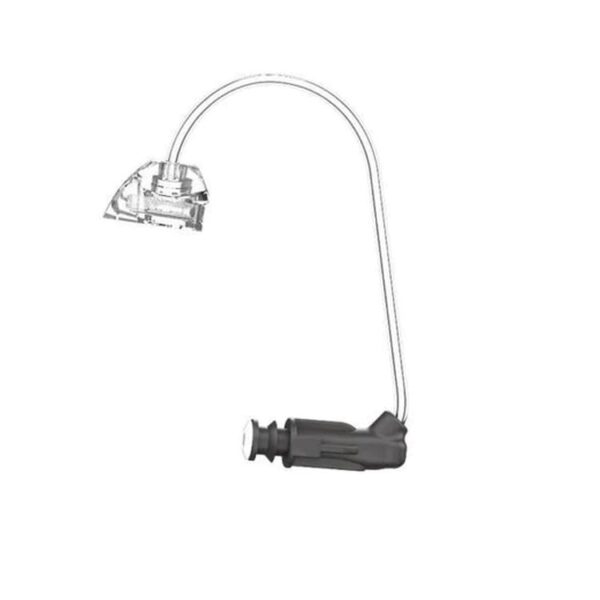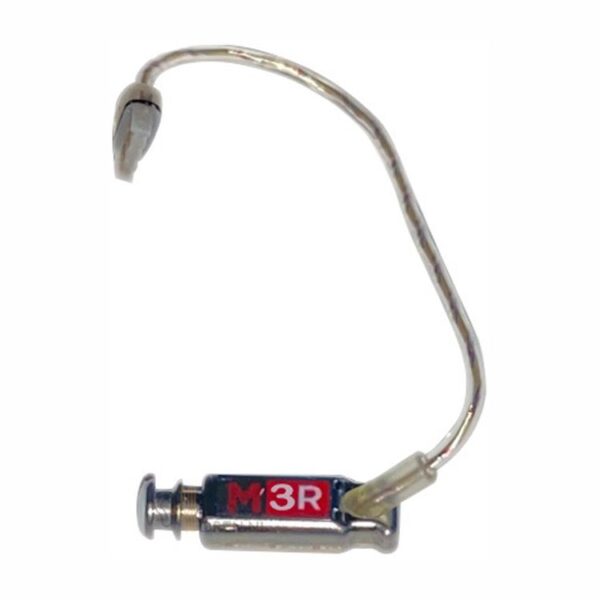Tubes and Wires
It is important to understand the difference between thin tubes and receiver wires, they are often confused with each other.
Thin tubes are mainly, but not exclusively, seen on NHS issue hearing aids. A thin tube is just that. The microphone of the hearing aid (sitting on the back of the ear) sends sound down a thin hollow tube. A ‘dome’ sits on the end of the tube. There is no electronics on the tube at all, it’s simply a hollow tube with a removable dome on the end.
Receiver wires are mainly, but not exclusively, seen on privately purchased hearing aids. Instead of a hollow tube you have a wire encased in plastic, and electronics passing through the wire to a receiver (loudspeaker) at the tip, the part that sits in your ear. Again, there is a removable dome that attaches to the tip fo the receiver wire similar visually to a thin tube.
It is also very important to match the brand and model of hearing aid you are wearing to the wire / tube as below.
Thin tubes and receiver wires are (obviously) not interchangeable. If you are still unsure of the difference between the two and / or are unsure what to order, please just ask us, we are happy to help.

